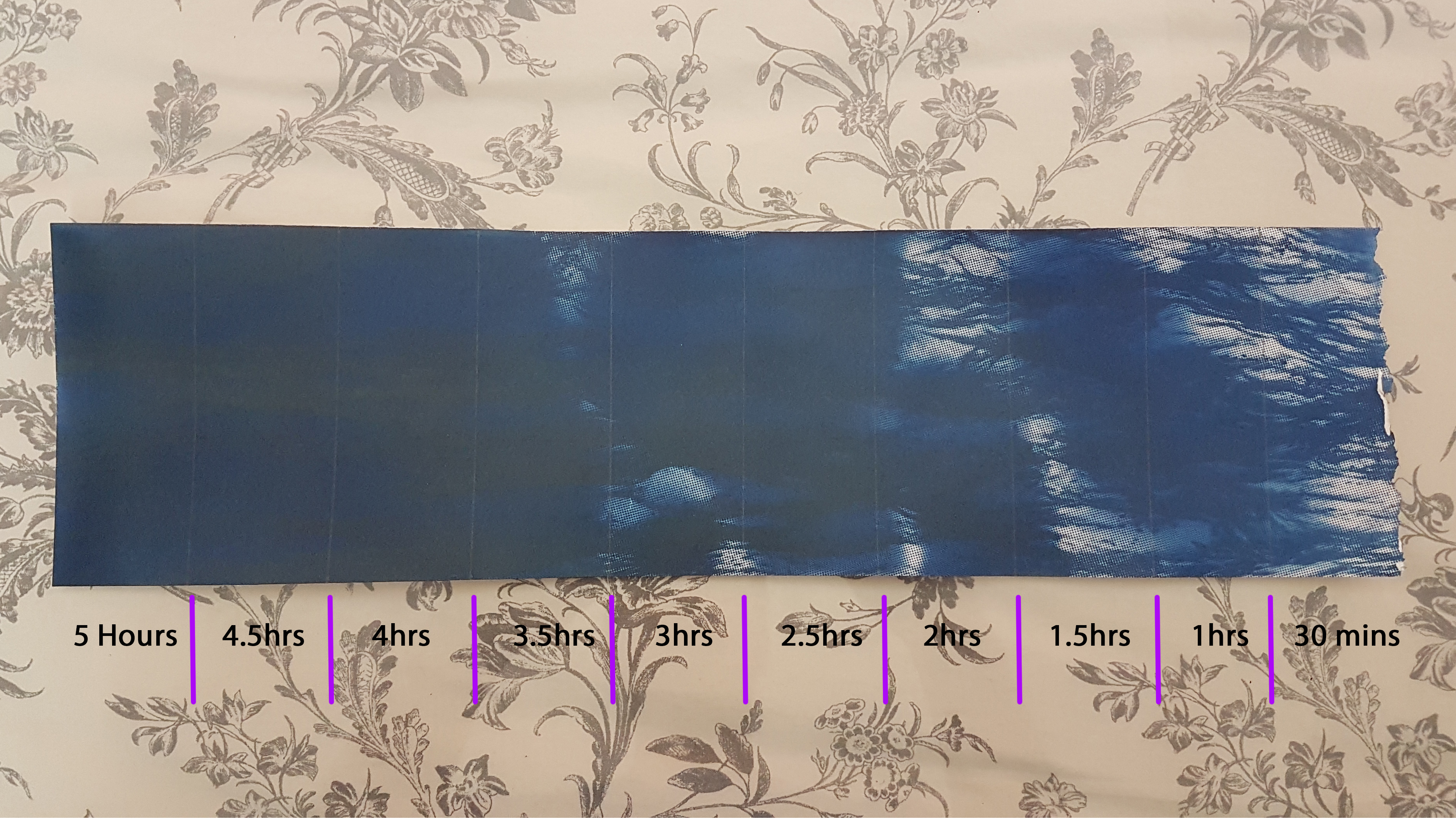As you can see the first test strip is way over-exposed as I assumed for some reason that the exposure times were in hours not minutes! Only the final exposure of 30 mins gives a decent result – experiment was carried out on very hot and sunny afternoon in August. Also for this test I didn’t use glass/perspex on top while exposing, only a thin sheet of plastic so the blotches you can see from around 3hrs to finish are probably from UV light leaking under the acetate.
The second test strip gave a much more accurate indication of exposure times – this test strip was exposed on a hot and sunny/slightly cloudy day, early afternoon, in September. I also used a sheet of clear perspex to press down the acetate into contact with the paper which gives a much better result, heavy glass would probably be better again.
For reference the image is of the sea surface/waves – but as this image was initially for a screen-print the image isn’t inverted correctly. Normally the image would be inverted on Photoshop then once exposed would show the original image.






